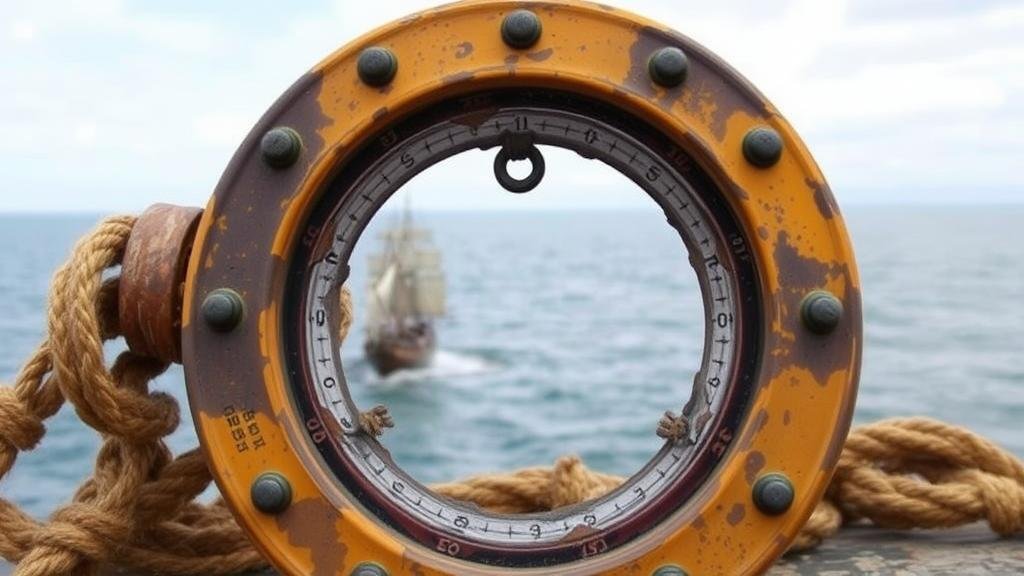Decoding Maritime Superstitions: Clues to Shipwreck Locations in Sailor Lore
Decoding Maritime Superstitions: Clues to Shipwreck Locations in Sailor Lore
Maritime superstitions have long been an integral part of seafaring culture, enshrining both fear and reverence for the oceans capacity for destruction and mystery. This article aims to explore how these superstitions can provide insights into shipwreck locations, interweaving historical context with contemporary analysis.
Understanding Maritime Superstitions
Maritime superstitions are beliefs or practices that sailors traditionally follow to avoid misfortune at sea. These can range from rituals performed before departure to taboos observed during voyages. irrational fears associated with these superstitions often stem from real historical events, where loss of life and vessel was common.
Historical Context
The origins of many maritime superstitions can be traced back to ancient civilizations. For example, the ancient Greeks believed in the power of Poseidon, the god of the sea, leading to various rituals to appease him. Similarly, in the 17th century, sailors in the British Navy believed that whistling on deck could summon storms.
Superstitions have persisted into modern times. A well-known superstition is that it is bad luck to change the name of a ship once it has set sail, a belief rooted in the idea that ships have souls and changing their name could anger them. Such beliefs often arise from sailors’ experiences and observations, codified into lore that would span generations.
The Relationship Between Superstitions and Shipwrecks
Many shipwrecks have occurred under circumstances that can be interpreted through the lens of superstition. Understanding these narratives can potentially guide researchers in localizing wreck sites. Data derived from sailor lore often referenced specific events leading to disasters, illustrating the connection between belief and the physical world.
The Myth of the Flying Dutchman
The legend of the Flying Dutchman, a ghost ship doomed to sail the seas forever, is one of the most famous maritime superstitions. Sightings of this phantom vessel have been reported near various locations, particularly around the Cape of Good Hope. For example, on February 24, 1660, Captain Hendrick van der Decken, on a voyage to the East Indies, is said to have cursed the crew and attempted to round the treacherous point despite brutal weather. His ship was never seen again, which has led to an enduring myth that offers potential clues to the location of undiscovered wrecks in the area.
Statistical Analysis of Shipwreck Sites
Research by maritime historians has illustrated that many wrecks are located in regions with noted maritime superstitions. A study conducted by the Australian National Maritime Museum found that 38% of maritime disasters reported in the 18th and 19th centuries occurred in waters associated with specific superstitious beliefs. For example:
- Areas deemed cursed, such as the Bermuda Triangle, have numerous reported shipwrecks, significant for their disproportionate number of maritime incidents.
- Regions where sailors expressed fears of spirits or weather being controlled by supernatural forces were often the sites of tragic losses.
Case Studies of Shipwrecks and Folklore
Numerous shipwrecks in the historical record paint a vivid picture of the interplay between superstitions and actual maritime disasters. following case studies illustrate how cultural beliefs connected to specific sites can provide crucial insights into wreck locations.
The SS Waratah
The SS Waratah vanished without a trace in July 1909 while traveling from Australia to England. Many theories emerged post-disappearance, including those based on superstitions about the sea’s wrath. A local legend claimed that the ship had been cursed due to the captain’s disregard for traditional practices, leading researchers to hypothesize potential locations near known lairs of shipwrecks.
The USS Indianapolis
The sinking of the USS Indianapolis during World War II provides another illustrative case. ship, struck by Japanese torpedoes on July 30, 1945, and subsequent shark attacks on surviving crew members became fodder for numerous superstitions about naval hexes and ill fate. The horror of the situation has led to persistent interest in the wrecks precise location, which was eventually found due to meticulous reviews of both historical records and local lore.
Conclusion
The examination of maritime superstitions offers a unique lens through which to view the history and geography of shipwrecks. By interpreting folklore alongside documented shipwreck incidents, researchers can form a more complete picture of the maritime landscape while also addressing cultural psychology among sailors. Understanding these elements provides valuable deductions for maritime archaeology and highlights the fascinating overlap between human belief and the natural world.
Future research could focus on combining folklore studies with modern marine technology such as sonar mapping to uncover further insights into undiscovered wreck sites. As sailors continue to traverse our oceans, their stories, grounded in both superstition and experience, remain vital to understanding maritime history.



